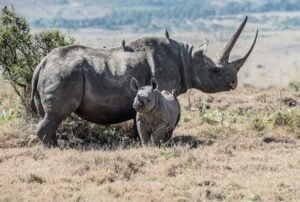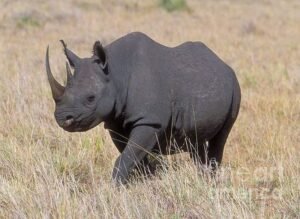Animals that are extinct in 2024
Many animals are currently threatened with extinction due to various factors such as habitat loss, climate change, poaching, pollution, and invasive species. Some notable examples include.
Amur Leopard
- Sumatran Elephant
- Javan Rhino
- Vaquita
- Mountain Gorilla
- South China Tiger
- Black Rhino
- Pangolins
- Amur Leopard:
With only around 60 individuals left in the wild, the Amur leopard is critically endangered due to habitat loss, poaching, and human-wildlife conflict.

-->Population:
It is estimated that there are only around 60 individuals left in the wild, making it one of the rarest felids on the planet.
-->Habitat Loss:
One of the primary reasons for the decline of the Amur leopard is habitat loss. Deforestation, primarily for logging and agricultural expansion, has greatly reduced the leopard’s habitat range.
-->Poaching:
Illegal poaching remains a significant threat to the survival of Amur leopards. They are hunted for their beautiful fur and other body parts, which are highly prized in traditional Chinese medicine.
- Sumatran Elephant:
This species is threatened by habitat loss, fragmentation, and conflicts with humans. It’s estimated that only around 2,400 to 2,800 individuals remain in the wild.

-->Habitat Loss:
One of the primary threats to Sumatran elephants is habitat loss and fragmentation due to deforestation, primarily driven by the expansion of palm oil plantations, agriculture, logging, and human settlements.
-->Human-Elephant Conflict:
As their habitat shrinks, Sumatran elephants increasingly come into contact with human settlements and agricultural areas, leading to conflicts. Elephants may raid crops, leading to retaliatory killings by farmers
-->Illegal Logging:
Illegal logging within the elephant’s habitat not only destroys their habitat directly but also facilitates access for poachers and increases human-elephant conflict.
- Javan Rhino:
With less than 80 individuals surviving in one small area, the Javan rhino is critically endangered primarily due to habitat loss and poaching for its horn.

-->Habitat Loss and Fragmentation:
Historically, the Javan rhino inhabited dense tropical forests across Southeast Asia. However, extensive deforestation and habitat fragmentation due to agriculture, logging, and human settlement have drastically reduced its habitat.
-->Small Population Size and Genetic Bottleneck:
With only around 80 individuals remaining, the Javan rhino population suffers from a lack of genetic diversity, making it more vulnerable to diseases and environmental changes.
-->Natural Disasters:
Natural disasters such as tsunamis, volcanic eruptions, and disease outbreaks pose additional threats to the already fragile population of Javan rhinos. A single catastrophic event could have devastating consequences for the species.
- Vaquita:
The vaquita, a small porpoise found in the Gulf of California, is critically endangered with less than 10 individuals left. It’s primarily threatened by bycatch in illegal gillnets used for fishing.

-->Bycatch in Illegal Gillnets:
The primary threat to vaquitas is entanglement in illegal gillnets used for fishing in the Gulf of California. These gillnets are primarily set to catch another critically endangered species, the totoaba fish, whose swim bladder is highly valued in traditional Chinese medicine.
-->Small Population Size:
The vaquita population has plummeted to alarmingly low levels, with estimates suggesting that only a few individuals, possibly less than 10, remain in the wild.
-->Habitat Loss and Degradation:
Habitat loss and degradation, including pollution and habitat fragmentation, also threaten the survival of vaquitas. Human activities such as coastal development, pollution from agricultural runoff, and noise pollution from boat traffic further degrade their habitat and disrupt their natural behavior.
- Mountain Gorilla:
While their numbers have slightly increased in recent years, mountain gorillas are still critically endangered due to habitat loss, poaching, and human diseases.

-->Habitat Loss and Degradation:
Mountain gorillas inhabit the dense forests of the Virunga Massif and the Bwindi Impenetrable Forest in Central Africa. However, their habitat is being rapidly degraded and fragmented due to human activities such as agriculture, logging, and infrastructure development.
-->Poaching and Illegal Wildlife Trade:
Despite conservation efforts, mountain gorillas are still threatened by poaching for bushmeat and the illegal wildlife trade. While direct targeting of gorillas for their body parts is rare, they often get caught in snares set for other animals.
-->Human-Wildlife Conflict:
Encroachment of human settlements into gorilla habitat leads to increased human-gorilla conflict. Gorillas may raid crops, leading to retaliatory killings by farmers.
- South China Tiger:
This subspecies of tiger is considered functionally extinct in the wild, with possibly no individuals remaining. Habitat loss and poaching are the primary reasons for its decline.

-->Habitat Loss and Degradation:
The primary reason for the decline of the South China tiger is habitat loss and fragmentation due to human activities such as deforestation, agricultural expansion, and urbanization.
-->Poaching and Illegal Wildlife Trade:
Historically, the South China tiger was heavily hunted for its fur, bones, and other body parts, which are highly valued in traditional Chinese medicine and as status symbols.
-->Decline in Prey Species:
Loss of prey species due to habitat loss, overhunting, and competition with domestic livestock has further exacerbated the decline of the South China tiger.
- Black Rhino:
Despite conservation efforts, black rhinos are still critically endangered due to poaching for their horns, habitat loss, and political instability in some regions where they’re found.

-->Poaching for Rhino Horns:
Poaching for their horns is the primary threat to black rhinos. Rhino horns are highly valued in traditional Asian medicine markets, where they are believed to have medicinal properties.
-->Habitat Loss and Fragmentation:
Habitat loss and fragmentation due to human activities such as agriculture, logging, and urbanization have significantly reduced the black rhino’s habitat range.
-->Human-Wildlife Conflict:
Encroachment of human settlements into rhino habitat leads to increased conflicts between humans and rhinos. Rhinos may raid crops, leading to retaliatory killings by farmers.
- Pangolins:
All eight species of pangolins are threatened with extinction due to illegal trade and habitat loss. They are the most trafficked mammals in the world.

-->Illegal Wildlife Trade:
Pangolins are highly sought after for their scales, which are used in traditional Asian medicine, and their meat, considered a delicacy in some cultures.
-->Habitat Loss and Degradation:
Pangolins are losing their natural habitat at an alarming rate due to deforestation, agricultural expansion, and urbanization. As their forest homes are destroyed or fragmented, pangolins have fewer places to live and forage for food, pushing them closer to extinction.
-->Poaching and Snaring:
In addition to being targeted for their scales and meat, pangolins often fall victim to indiscriminate snaring intended for other wildlife. This unintended consequence of poaching adds to the pressures already faced by pangolin populations.
Top 5 Indian Street Food Snacks for a Quick Lunch Break Click here

1 thought on “Animals that are extinct in 2024”